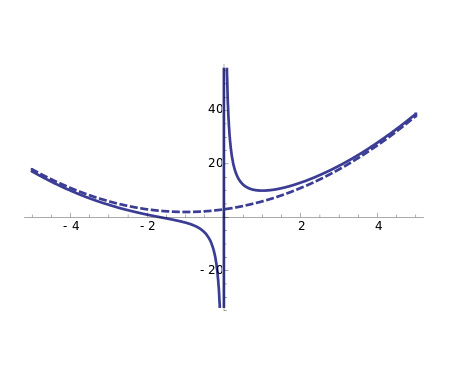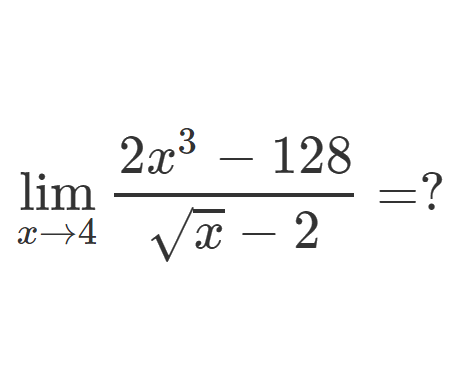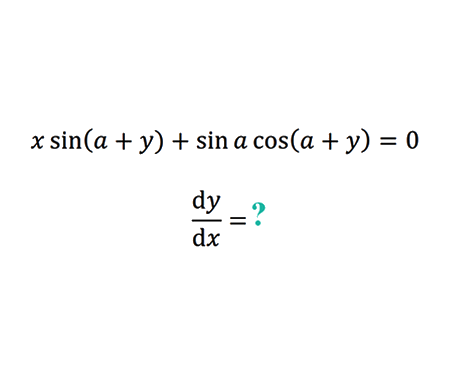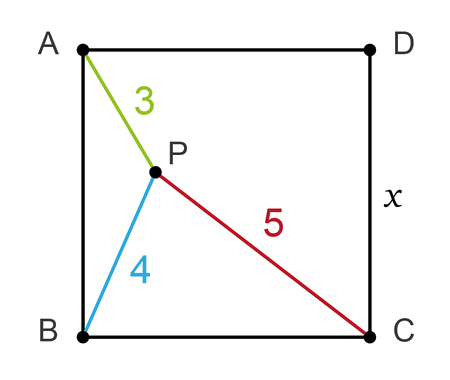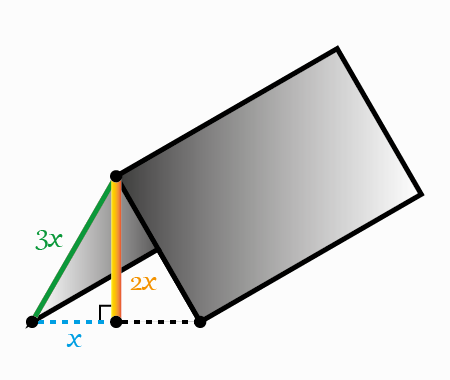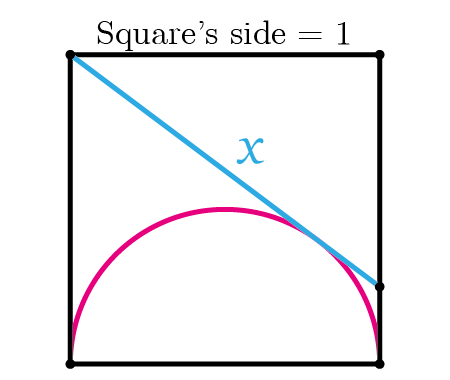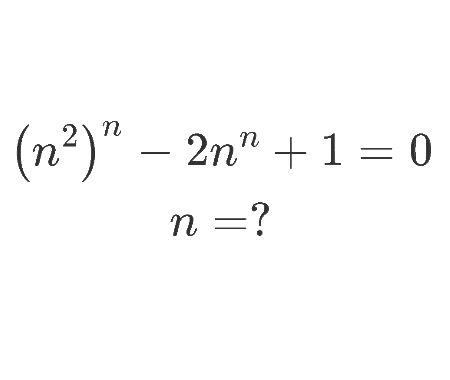The area of a circle by slicing
Home -> Solved problems -> The area of a circle by slicing

Solution
The main idea is to divide a circle into rectangular slices.

\[\begin{gathered}
R^2=x_i^2+y_i^2 \\\\
x_i=\sqrt{R^2-y_i^2}
\end{gathered}\]
The area of the \(i^{\text {th}} \) slice is
\[A_i=2 x_i \Delta y=2 \sqrt{R^2-y_i^2} \Delta y\]
Now let’s calculate the area of the circle:
\[A=\lim _{n \rightarrow+\infty} \sum_{i=1}^n A_i=\lim _{n \rightarrow+\infty} \sum_{i=1}^n 2 \sqrt{R^2-y_i^2} \Delta y=\int_{-R}^R 2 \sqrt{R^2-y^2} d y\]
Let
\[\begin{aligned}
& y=R \sin \theta \\\\
& d y=R \cos \theta d \theta
\end{aligned}\]
\[\begin{aligned}
& \mathrm{A}=2 \int_{-\frac{\pi}{2}}^{\frac{\pi}{2}} \sqrt{R^2-R^2 \sin ^2 \theta} \mathrm{R} \cos \theta d \theta=2 \int_{-\frac{\pi}{2}}^{\frac{\pi}{2}} \sqrt{R^2\left(1-\sin ^2 \theta\right)} \mathrm{R} \cos \theta d \theta \\\\
& =2 \int_{-\frac{\pi}{2}}^{\frac{\pi}{2}} R \sqrt{\cos ^2 \theta} \mathrm{R} \cos \theta d \theta=2 R^2 \int_{-\frac{\pi}{2}}^{\frac{\pi}{2}} \cos ^2 \theta d \theta \\\\
& \cos ^2 \theta=\frac{1}{2}(1+\cos 2 \theta) \\\\
& A=2 R^2 \int_{-\frac{\pi}{2}}^{\frac{\pi}{2}} \frac{1}{2}(1+\cos 2 \theta) d \theta \\\\
& =R^2\left[\theta+\frac{\sin 2 \theta}{2}\right]_{-\frac{\pi}{2}}^{\frac{\pi}{2}} \\\\
& =\pi R^2 \\\\
& A=\pi R^2
\end{aligned}\]
Home -> Solved problems -> The area of a circle by slicing
Every problem you tackle makes you smarter.
↓ Scroll down for more maths problems↓
Find the equation of the curve formed by a cable suspended between two points at the same height
Prove that the function \(f(x)=\frac{x^{3}+2 x^{2}+3 x+4}{x}
\) has a curvilinear asymptote \(y=x^{2}+2 x+3\)
Why does the number \(98\) disappear when writing the decimal expansion of \(\frac{1}{9801}\) ?
if we draw an infinite number of circles packed in a square using the method shown below, will the sum of circles areas approach the square's area?
Is it possible to solve for \(x\) so that \(ln(x)\), \(ln(2x)\), and \(ln(3x)\) form a right triangle?














